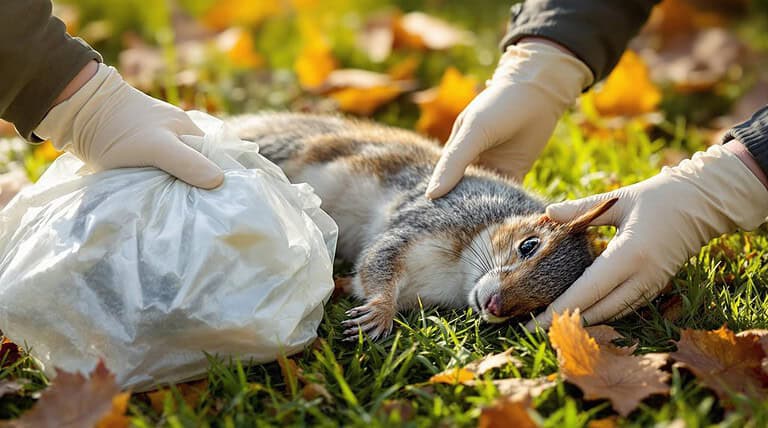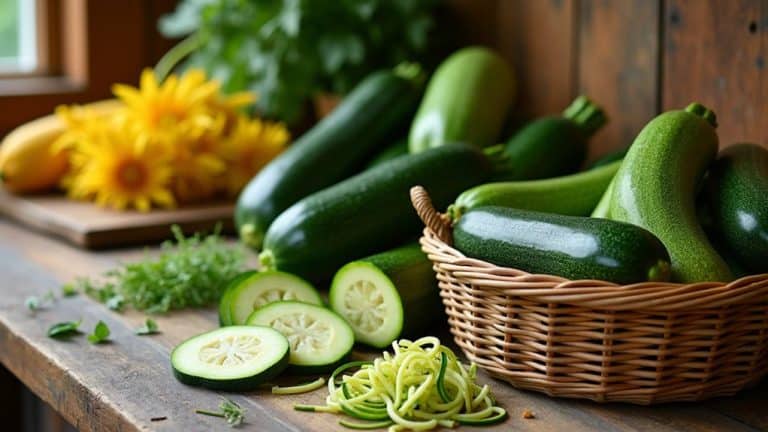Best Bee Plants for Your Pollinator Garden
When you're looking to create a pollinator garden, choosing the right plants is essential for attracting native bees. You'll want to focus on a mix of early, mid, and late-season bloomers to provide a steady food supply. Think about incorporating favorites like sunflowers and bee balm, but reflect on how the shapes and colors of the flowers can further enhance their appeal. Understanding these aspects can lead to a thriving garden, yet there are other significant factors to contemplate that can make your garden even more inviting to these important pollinators.
TLDR
- Include a variety of native plants like sunflowers, purple coneflowers, and bee balm to attract diverse bee species and enhance biodiversity.
- Select early, mid, and late-season bloomers to provide a continuous food supply for pollinators throughout the growing season.
- Choose flat or bowl-shaped flowers in bright colors such as yellow, blue, and purple to create ideal landing pads for bees.
- Incorporate natural shelters like dead leaves and twigs, along with accessible water sources, to support bee habitats and hydration.
- Avoid pesticides and herbicides, opting for natural pest control methods to protect pollinators and promote a healthy ecosystem.
Native Bee Plants

When it comes to attracting native bees to your garden, choosing the right plants is essential. You'll want to plant things like sunflowers, purple coneflowers, and bee balm—trust me, they're like bee candy! With about 35% of bees being picky eaters, having a variety helps. Additionally, these plants are vital for native bee species, which coevolved with local ecosystems, supporting healthy pollination and biodiversity. Moreover, healthy dragonfly populations can also aid in keeping pest insect numbers down, further enhancing the environment for your buzzing buddies. Plus, native plants are low maintenance, so you can spend more time enjoying your buzzing buddies!
Seasonal Blooming Strategies
Creating a pollinator garden that thrives throughout the seasons involves strategic planning for blooming times.
You'll want to pick plants like salvia and bee balm for spring, milkweed for summer, and asters for fall. Continuous blooming is essential for maintaining a steady food supply for pollinators throughout the year. By mixing flowers that bloom at different times, you keep those buzzing buddies well-fed all year! Additionally, incorporating coffee grounds into your garden can enhance soil health and support stronger plant growth.
Who knew gardening could be this exciting? Let's get planting!
Flower Shapes and Colors

Let's chat about flower shapes and colors that make bees buzz with excitement!
Did you know that flat, bowl-shaped flowers are like the ultimate bee landing pads, while those long tubular ones are more like a frustrating, nectar-filled maze? Open stamens effectively attract bees for both nectar and pollen, making them an essential choice for your garden. Additionally, incorporating plants that thrive in full sun conditions can create an even more inviting environment for our buzzing friends.
Plus, mixing in some bright yellows, blues, and even a splash of purple can turn your garden into a bee paradise, so why not get creative and make it as colorful as a box of crayons?
Importance of Flower Shapes
The shape of a flower plays a crucial role in attracting bees, as it directly influences their ability to access nectar and pollen. Think about how bees prefer flowers like daisies or coneflowers, which have flat, easy-to-land-on surfaces. These shapes make it a breeze for them to get to the good stuff! Flowers with varied flower shapes and structures create diverse feeding opportunities, enhancing garden ecology and promoting pollinator diversity.
Color Variety for Pollinators
When planning your pollinator garden, considering the color variety of flowers is just as important as their shapes. Bright colors like blue, purple, and yellow aren't just pretty—they're like neon signs for bees and butterflies! These bright colors play a crucial role in attracting various pollinators, enhancing the chances of successful pollination. And who doesn't love a flower that attracts hummingbirds with its lively red? Mix it up, and you'll create a buzzing paradise right in your backyard!
Single vs. Double Flowers
Single and double flowers each play distinct roles in a pollinator garden, impacting how effectively they attract and support pollinators.
Single flowers, like bee balm, are easy for our buzzing buddies to access, while double flowers, like hybrid roses, are like a fancy buffet with the doors locked. This is crucial because single flowers provide essential nectar and pollen for pollinators.
Stick to single blooms to keep your garden buzzing with happy pollinators!
Planting Layout Tips
To create an inviting pollinator garden, start with a thoughtful planting layout that maximizes both aesthetics and functionality. Mix native plants with varying bloom times to keep the buffet open all season! Including a variety of core plants ensures that your garden attracts diverse pollinators throughout the year. Group plants in clusters of three to seven for a natural look. Additionally, consider incorporating plants that thrive in specific light conditions, as light color effects can significantly enhance their growth. And don't forget to layer heights—tall sunflowers in the back, and cute groundcovers in front. Your pollinators will thank you!
Shelter and Support for Pollinators

When you think about creating a cozy spot for our buzzing friends, don't forget that natural shelter options are just as important as those lively flowers! Imagine leaving some dead leaves, twigs, and logs in your garden—it's like setting up a five-star hotel for pollinators, and believe me, they'll appreciate the thought. Including native plants in your garden will attract a variety of pollinators that rely on them for essential nectar and pollen. Keeping your garden free from harsh chemicals is also crucial for maintaining a healthy environment for propane tank safety and pollinators alike. Oh, and while you're at it, make sure to add a little water source, because just like us, pollinators need a rejuvenating drink after a long day of buzzing around!
Natural Shelter Options
Creating a diverse habitat in your garden is essential for providing natural shelter for pollinators. Think about planting trees, shrubs, and wildflowers to create cozy nooks. Leave some dead wood and leaf litter—it's like a five-star hotel for bees! And don't forget those bare patches of soil; ground-nesters love them! Additionally, incorporating native plants helps ensure that the pollinators have the necessary resources for their life cycles. Your garden can be their ultimate retreat—how cool is that?
Water Sources Importance
Water is an essential resource for pollinators, playing an important role in their survival and well-being.
Imagine sipping from a cool stream after a hike—pollinators feel the same way about water!
Set up birdbaths or puddling areas with mud and rocks nearby. Continuous water supply is essential while pollinators are active.
Just make sure to keep it clean and change the water regularly.
They'll thank you with buzzing visits!
Top Bee Attractants
To attract bees effectively, focus on selecting the right plants that appeal to their preferences.
Think purple, blue, orange, or yellow flowers with easy access—no one likes a complicated buffet!
Bee balm and lavender smell divine, while native plants like coneflowers are bee magnets. Native flowers also support local pollinators, enhancing the overall biodiversity of your garden.
Group those blooms together, and watch the buzz in your garden!
Trust me, it's a bee-utiful sight!
Continuous Blooming Plants

After choosing the right bee attractants, it's time to guarantee your garden keeps the buzz going throughout the growing season.
You'll want to plant continuous bloomers like Catmint and Coneflower, which provide nectar from spring through fall. Perennial plants are essential for creating a sustainable habitat that supports various pollinators.
These flowers not only look great but also attract all sorts of pollinators.
Trust me, your buzzing backyard will be the talk of the hive!
Essential Water Sources
Creating a welcoming environment for pollinators means providing essential water sources alongside your blooming plants.
Think birdbaths, shallow dishes with rocks for bees, or even a butterfly puddling area with mud and sand—how cool is that?
Place them near flowers, keep 'em clean, and watch the magic happen! Bees pollinate approximately 75% of flowering plants, so let's quench their thirst and help our garden thrive!
Avoiding Harmful Chemicals

When it comes to nurturing a thriving pollinator garden, avoiding harmful chemicals is essential for the health of your buzzing visitors. You wouldn't want to invite friends over and then serve them poison, right? Skip the pesticides and herbicides—go for natural pest control instead! Think beneficial insects and companion planting. Your garden and its pollinators will thank you with every pleasant buzz! Additionally, the extensive use of neonicotinoid pesticides has been shown to significantly harm pollinator populations, making it crucial to choose safer alternatives.
And Finally
So, ready to change your garden into a bee paradise? By planting a mix of lively blooms, providing a water source, and avoiding those pesky chemicals, you'll create a buzzing haven that's not just good for bees but also super fun to watch! Imagine all those bees flitting around, working hard while you sip lemonade on your porch. Trust me, it's a win-win! So grab those seeds, get planting, and let's make your garden the place to bee!






